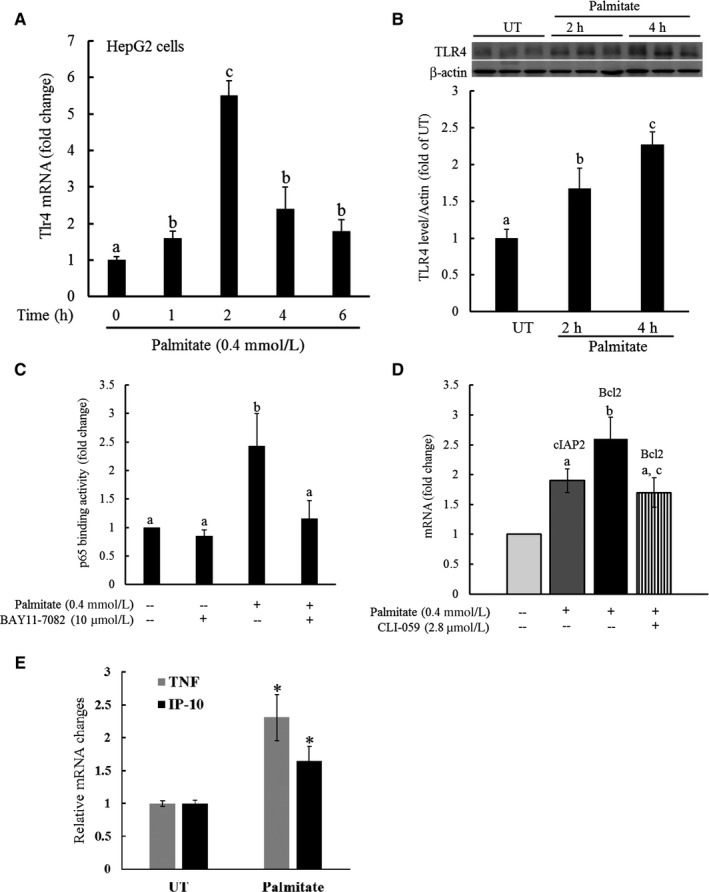Figure 1.

Palmitate exposure up‐regulates TLR4 expression and activates TLR4 signalling pathway. A, HepG2 cells were treated with palmitate at 0.4 mM for various durations. TLR4 gene expression was quantified by real‐time RT‐PCR. All values are denoted as means ± SD from three or more independent experiments. Bars with different characters differ significantly (P < .05). B, HepG2 cells were treated with palmitate at 0.4 mmol/L for either 2 or 6 hours. TLR4 protein abundance was quantified by Western blot. C, HepG2 cells were treated with palmitate at 0.4 mM with/without 1 hour pre‐treatment with BAY11‐7082, a NF‐κB inhibitor, for 2 hours. Nuclear proteins were isolated and subjected to ELISA for the determination of p65‐DNA‐binding activity. All values are denoted as means ± SD from three or more independent experiments. Bars with different characters differ significantly (P < .05). D, HepG2 cells were treated with palmitate at 0.4 mmol/L at the presence/absence of CLI‐059, a TLR4 inhibitor, for 16 hours. Gene expression of cIAP2 and Bcl2, two NF‐κB target proteins, was quantified by real‐time RT‐PCR. All values are denoted as means ± SD from three or more independent experiments. Bars with different characters differ significantly (P < .05). E, HepG2 cells were treated with palmitate at 0.4 mmol/L for 16 hours. Gene expressions of TNF‐alpha and IP‐10 were quantified by real‐time RT‐PCR. All values are denoted as means ± SD from three or more independent experiments. *P < .05 vs untreated cells
